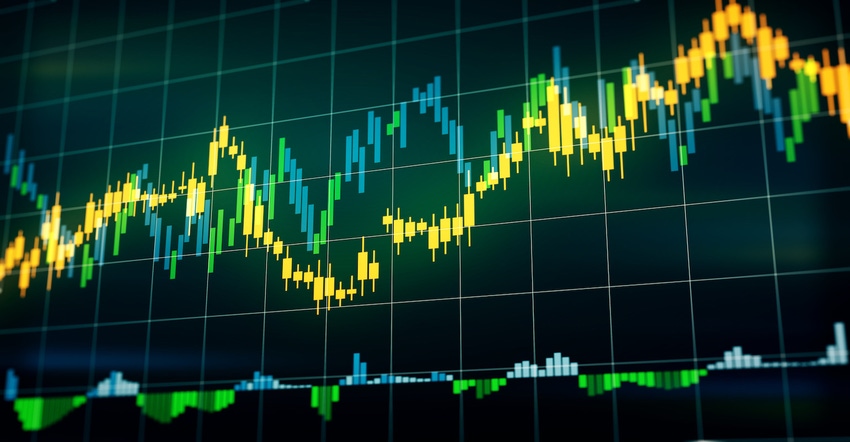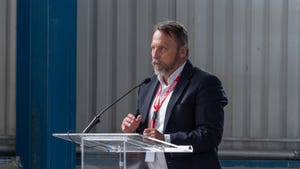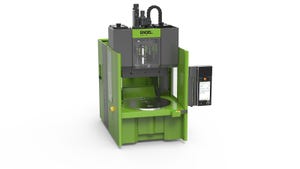Weekly Resin Report: Buying Picks Up, Despite Elevated Price Levels
Worn down by ongoing resin shortages, plastics processors are striking deals with producers to ensure supply well into August.
July 22, 2021

Fresh production disruptions and a new force majeure declaration along with another surge in monomer costs did not put a dent in resin trading the week of July 12, as strong buying was seen across all commodity resin groups, reports the PlasticsExchange in its Market Update. Some processors, still weary from ongoing resin shortages, sought confirmed supply well into August. Even with buyers keen to procure, there was meaningful resistance to asking prices and, in some cases, easing was needed to encourage buyers to belly up to the bar.
Though North American resin production has improved significantly, and spot material availability has increased, the overall polyethylene (PE) and polypropylene (PP) markets remain very tightly supplied. Producers have been back-filling contract orders and busily rebuilding their inventories, partly as a buffer against potential production disruptions from upcoming planned maintenance and unplanned outages as we head deeper into hurricane season, writes the PlasticsExchange.
Procurement of imported resin peaks.
A significant volume of imported resin — mostly homo- and co-polymer PP and high-density (HD) PE — has been arriving at US shores to supplement insufficient domestic supplies. While more shipments are still sailing, it seems that peak import buying is behind us, at least for this leg of the cycle. Soaring ocean freight, which for some lanes has surpassed $15K/container, along with extended transit times, long port delays, and massive demurrage fees, has crimped the arbitrage and largely squashed the high-volume import incentive for importers, according to the PlasticsExchange.
Producers continued to pile on the increases to keep upward pressure on pricing. There are $0.03 to 0.05/lb hikes on the table for both PE and PP contracts for July, and a new $0.05/lb increase has been nominated for August. With contract levels relentlessly trekking higher while spot levels remain primarily stagnant at heightened levels, spot premiums have diminished with fewer large contract buyers in need of significant extra supply and competing for pellets to press prices higher.
PE demand exceeds supply.
Spot PE trading improved, and above average volumes changed hands through the PlasticsExchange trading desk. Domestic levels were mostly firm, except for Pail grade, which extended gains with a two-cent uptick. There is still more demand for most prime than can be presently met, despite statistics indicating that domestic supply is improving. Most prime PE grades are tough to find, but supply has been trickling in and all good Injection-grade HDPE, low-density (LD) PE, and linear-low-density (LLD) PE resins are snatched up in the blink of an eye. The PlasticsExchange notes that it has participated in high-volume imports of HDPE Injection and Blow Molding grades, but not film grades, where semi-finished roll stock imports reign supreme.
There has been some overall improvement in domestic PE supply conditions, however, with larger processors’ needs increasingly satisfied directly from producers. There are still lingering PE production and supply issues, and as soon as a force majeure or sales allocation is lifted, another production issue seemingly takes its place, which has helped maintain upward pressure on prices. There could be some better availability ahead from Canada, as Nova lifted a force majeure on all its PE production, including LDPE and HDPE, which had been in place for just over two months due to a cracker outage and lack of monomer. However, issues arose at another producer's HDPE production unit in Texas, which may not be back online until September. At least four other PE producers remain under force majeure or sale allocation programs.
After pushing through June contract price increases of $0.05/lb for all commodity grades, suppliers are looking to extend that streak for an eighth and then ninth consecutive month. July increase initiatives of $0.03 to 0.05/ lb are on the table, and one producer came out with another nickel for August on its HDPE resins. PE contracts have relentlessly increased 11 of the past 13 months, and have risen some $0.60/lb along the way on the back of limited supply availability, strong buyer demand, and premium spot levels.
Slight downtick in spot PP prices.
Spot PP eased a couple cents, which helped trigger healthier demand and an uptick in trading activity. Higher volume trade was seen for homo-polymer PP, both low melt and very high melts, as well as a smattering of imported Prime co-polymer PP resins. A steady stream of off-grade railcars again made its way through the market at increasingly higher prices, bringing additional consolidation in pricing. There has been very little domestic prime PP available in the spot market, but imported material has provided good liquidity for those in need, according to the PlasticsExchange.
A couple cents off PP is not much of a win, as prices remain in the realm of record levels that have been essentially maintained since the immediate aftermath of the February storm. However, processors have seemingly grown accustomed to the strong price levels which will largely endure for at least the near- to mid-term, as upstream inventories rebuild back to a collectively abundant position. In the meantime, a lightning strike took out PP production lines at a facility in Louisiana, hampering the general recovery. There was no complete timeline for the re-start at the facility, which had just lifted a force majeure at the onset of July. At least five other PP producers still have force majeure and supply allocations in place.
Heat is on higher contract prices this summer.
The lightning strike is an excellent example of random factors to keep in mind for the second half of this year, such as an active hurricane season, strong energy futures, electricity grids pressing capacity during summer heatwaves across the country, supply chain interruptions, and prohibitively high domestic and international freight rates, cautions the PlasticsExchange in its report. Until inventory is flush, the heat is on higher contract prices this summer, with July increases from $0.03 to 0.05/lb on the table, in addition to a change in July propylene monomer, which is pointing toward a modest increase for July. PP producers have already starting stacking another nickel margin increase on for August. We are not out of the woods yet, but absent any additional production disruptions during the rest of hurricane season, this market too will eventually cycle through.
Read the full Market Update, including news on energy futures and feedstock pricing, on the PlasticsExchange website.
About the Author(s)
You May Also Like


